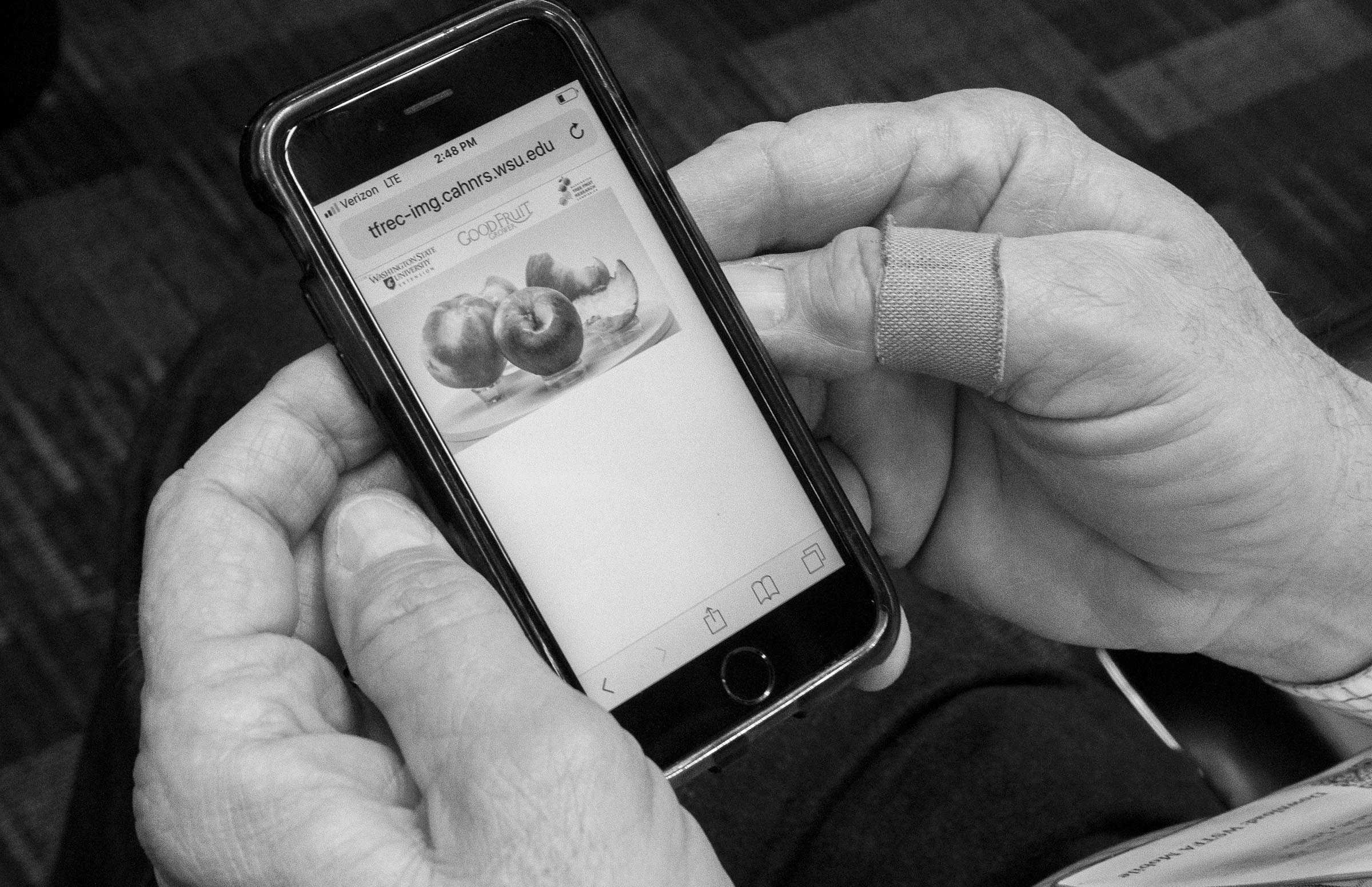
The final day two panel covering harvest management shares a laugh at the conclusion of their talk during the Washington State Tree Fruit Association’s annual meeting on Tuesday, December 4, 2018, at the Yakima Convention Center in Yakima, Washington. (TJ Mullinax/Good Fruit Grower)
Washington State University Extension, in cooperation with the Washington Tree Fruit Research Commission and Good Fruit Grower magazine, will be rolling out a new apple defect guide next year.
Rob Blakey of Stemilt Growers, formerly with WSU, and the commission’s Ines Hanrahan together unveiled a sample of what growers can expect in the online version during the Washington State Tree Fruit Association’s annual meeting on Tuesday afternoon.
“Our goal was to have the most comprehensive defect guide, with the best photos and the best user interface, and that’s easily updatable,” Hanrahan said.
So far, the guide includes 169 defect and variety defect combinations covering physiology, entomology, physical defects and pathology. “We’ve captured almost everything that can go wrong with an apple,” Blakey said.
A sample from the website, which is expected to go live in early 2019, can be found at bit.ly/bluemold. The group also expects to print a poster and guide.

An annual meeting attendee tries out the defect guide demonstration on their mobile phone. (TJ Mullinax/Good Fruit Grower)
And here’s a brief rundown of some of Tuesday afternoon’s presentations:
Apple growers experienced a bit of a decay outbreak in the 2017-18 season, and researchers delved in to try to determine the causes. They found the decays occurred no matter where the fruit was growing, or which packing house or what varieties, according to Richard Kim of Pace International.
The causes came down to six:
Stem-end splitting and cracking.
Cross-contamination by drench solution.
High incidence of soft scald.
Infections during pre-sizing and packing.
Fungicide resistance.
Drenching can cause a lot of problems, and the industry is trending more toward thermo-fogging because most of the postharvest chemicals in use today can be applied with that method, he said.
But if drenching is the only option, packers should maintain the recommended drench solution and adequately clean drenchers.
“There are a lot of fungal spores and soils mixing together settling down in the bottom. So, if you physically remove all of the dirt and then clean up, that’s the No. 1 thing you can do,” Kim said.
Washington State University’s Achour Amiri noted in a separate talk that drenching seems to be better for some pre-harvest rots, but thermonebulization appears to be better for postharvest rots.
The afternoon session ended with a panel of growers discussing strategies to ensure fruit quality and maximize packouts.
Bruce Allen, of Columbia Reach Pack, said that when it comes to fruit quality, “crop load is everything.” Nick Plath of Washington Fruit and Produce agreed, sharing the company’s careful approach to crop load that starts with bud counting to guide pruning and thinning.
As is often the case when it comes to fruit quality concerns, Honeycrisp came up frequently in the discussion.
“Honeycrisp is probably the most difficult apple to manage through harvest because it has such a wide range,” Allen said. It’s critical to pick the fruit at the proper maturity, not too early or too late, he said, even though that’s a labor expense. “It takes three weeks to pick Honeycrisp,” he said. “If you are doing it in two weeks you are screwing up.”
As for protecting Honeycrisp from puncture wounds by stem clipping, it’s still important, said Jake Gutzwiler, quality control manager for Stemilt Growers.
Growers may notice that clipping — or not — doesn’t seem to have a big impact on packouts, but the stems cause the most damage during packing, he said. That leads to problems on repacking or consumer rejects.
Broadly, the most important thing growers can do to achieve good packouts is be realistic about their fruit quality at the end of the season, Gutzwiler said.
“Far too often, I see where growers take so much pride in the product we’ve grown that we have a hard time adjusting our game plan,” he said. “But we have to live in reality. If you have to wait to get more fruit size or it rains for seven days straight, that maturity has moved along and I can’t store than fruit for 10 or 12 months now.”
– by Shannon Dininny and Kate Prengaman






Leave A Comment